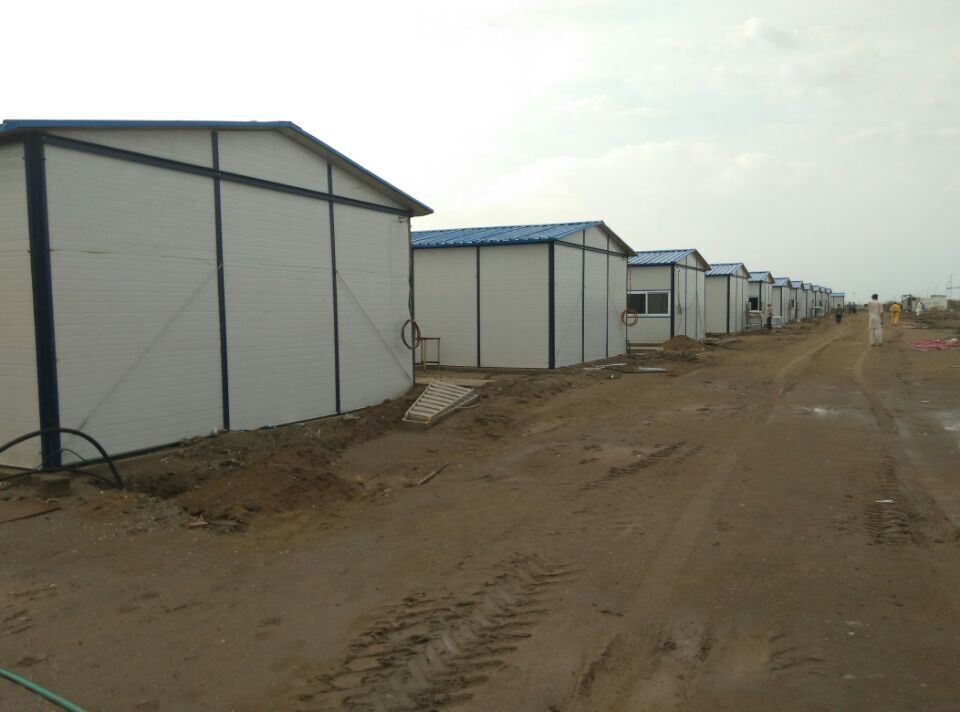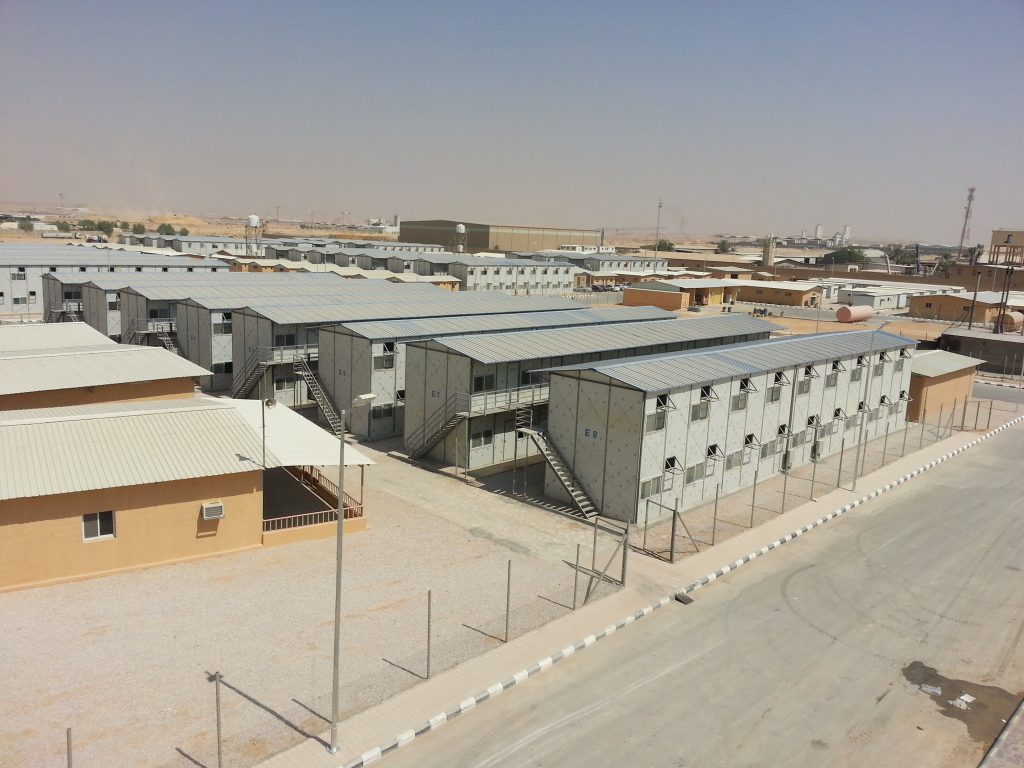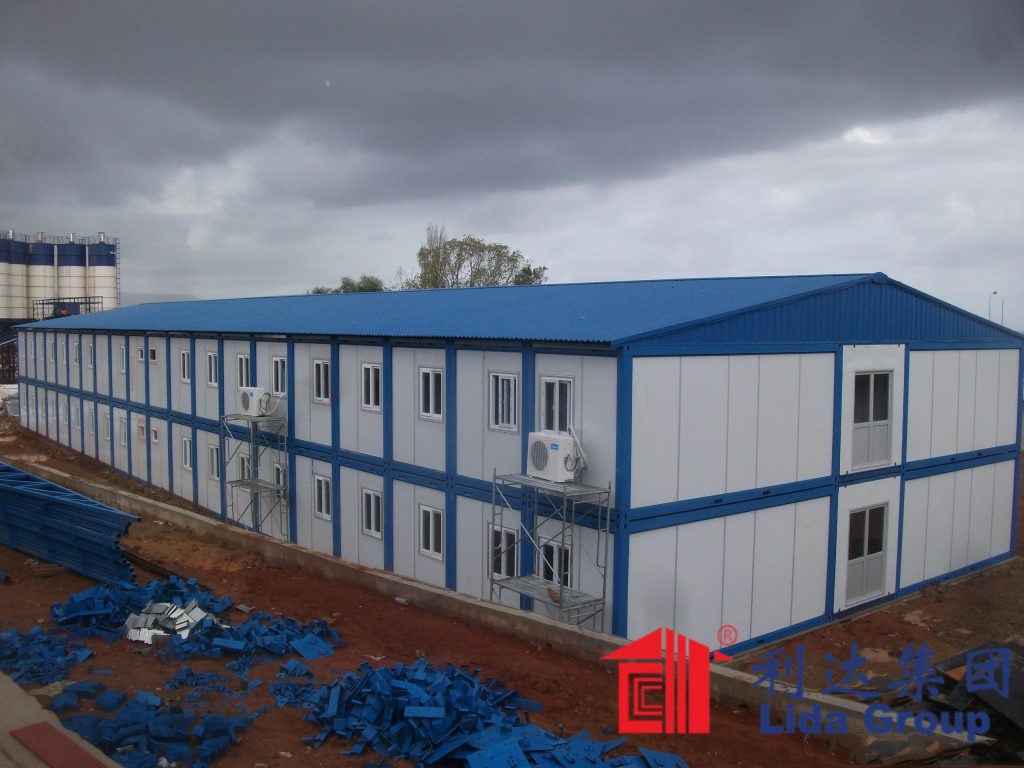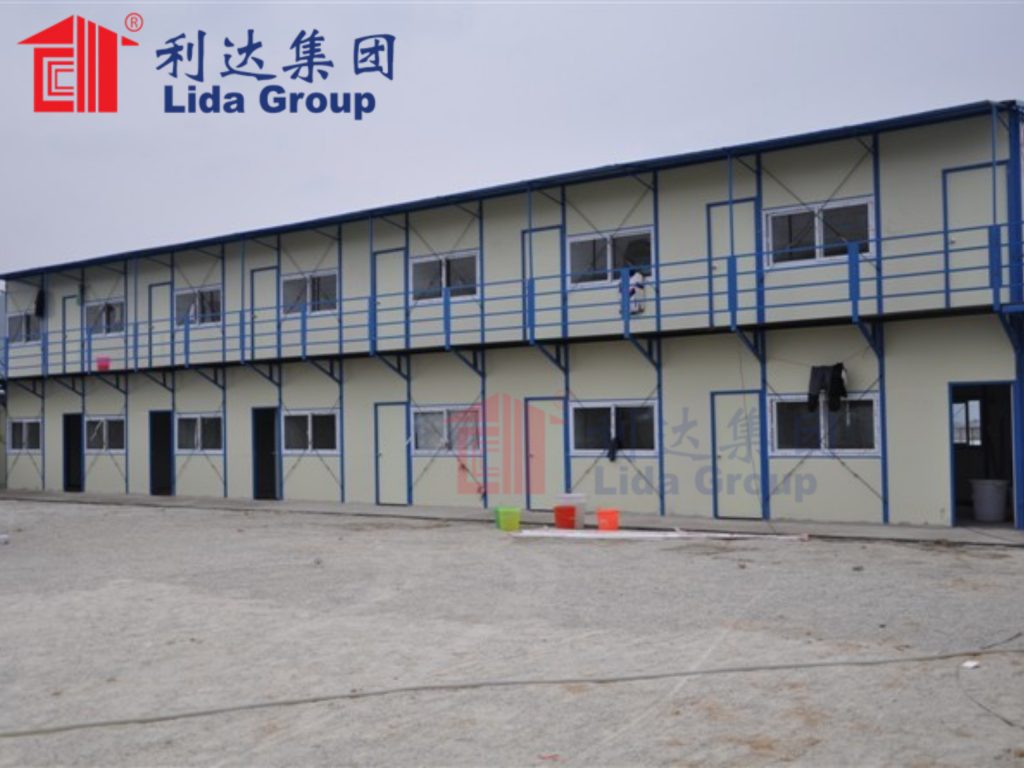Multinational organizations involved in short-term industrial projects face ongoing challenges providing comfortable, cost-effective worker accommodation suited to remote jobsites. A new report examines pilot installations of pre-engineered temporary dormitories developed by Chinese manufacturer Lida Group to address this need. Their housing solutions utilize insulated composite panel construction for affordable, versatile accommodations.
Early prototypes targeted seasonal labor housing. Modules assembled from lightweight sandwich wall and roof panels furnished basic bedrooms surrounding shared amenities. Field tests found 10-person crews easily assembled prototype blocks from pre-cut kits within a week—half the time of wood framing—to house 50 grape pickers near Australia’s Riverland region for 6 months.
Based on feedback, engineers optimized structural simplicity. Roof and floor panels now interconnect wall cassettes into self-supporting units independently erected without heavy lifting gear. All joints integrate reversible quick-release fasteners for rapid deployment. Upgrades allowed four general laborers to assemble a 75-person residence from flat-pack components in only 4 days, well ahead of schedule.

Pilot installations now span industry use cases worldwide. In west Texas oil fields, clusters of single and double-occupancy modules sheltered 500 pipeline technicians through seasonal expansion projects. Rows of interconnected bedroom boxes provided flexible spacing configured via pre-programmed layouts suited to fluctuating crew sizes each quarter over 18 months.
A Canadian logging camp housed 400 fallers and mill-hands within multi-story “stackable” apartment blocks screwed together on-site in under two weeks. Structurally reinforced composite panels permitted up to 4 vertically stacked living units reaching capacities exceeding conventional wood structures. Strategic glazing maximized natural daylight throughout.
Mining communities posed new design challenges. Isolated work sites demand durable, energy-efficient spaces for occupations operating around-the-clock in extreme climates. Northern Brazil gold mines tested year-round housing able to withstand tropical storms and maintain thermal comfort absent traditional cooling infrastructure. Evaluation found composite construction stable through heavy rain and heat while indoor temperatures rested comfortably within safe zones set by health regulators.

Advanced engineering resulted from real-world feedback. Load-bearing wall cassettes now detach fully-outfitted via patented toggle connections, improving maintenance access. Structural modeling optimizes lightweight core strength against high wind loads following destructive tornado impacts surveyed through insurance claim analyses. Upgrades showcase continuous refining towards best practices for remote job site housing worldwide.
Independent analysis validates safety, quality and performance. Building research institutes subjected early mockups to rigorous testing simulating seismic activity, flooding, fire exposure and seasonal freeze-thaw cycles across diverse regions. No cracking, buckling or failures appeared through simulations exceeding code minimums. Peer reviews endorse durability, concluding pilot installations meet or surpass standards for permanent residential buildings.
Empirical metrics prove success to stakeholders. Installations consistently finish 30-50% faster than wood-framing equivalents according to time-lapse studies. Material waste averaged under 3% of on-site build volumes versus 15-25% industry averages. Less transportation improves carbon footprints—one Texas location reduced fuel use 43% transporting flat-packed dormitories versus sticks. Lower installed and operating costs benefit owners while prioritizing workforce comfort.

Satisfaction surveys from over 12,000 tenants housed to date report averages exceeding 90% for qualities like stability, ventilation, noise insulation and modern amenities compared to previous jobsite housing. Consistent positive feedback validates durability and versatility meeting occupant needs regardless of industry or location. Constructability innovations help address labor housing challenges at massive global scales.
Based on pilot results, independent forecasting predicts tremendous addressable markets. Estimates suggest composite panel dormitories could supply a projected 15-25% of short-term accommodation demands in remote industries alone by 2030 through continued innovation. Broader macro-level impacts may significantly improve living standards for transient workers worldwide.

In conclusion, the report demonstrates that pre-engineered temporary dormitories provide a sustainable, scalable solution for varied short-term worker housing challenges. Pilot installations prove composite panel construction rapidly deploys comfortable, affordable spaces suited to diverse industry and geographic needs. Empirical data gathered through real-world implementation validates standardized yet adaptable building systems as optimal approaches to support remote jobsites accessing specialized labor forces globally. Continued optimization positions the prefabricated dormitories as leaders in revolutionizing temporary housing construction practices to benefit workforce wellbeing for generations to come.

Related news
-
Researchers analyze prototypes for durable modular farm buildings using Lida Group's standardized galvanized steel structural framing and cladding panel systems
2024-08-29 17:01:22
-
Case studies examine implementations of Lida Group's standardized dormitory designs featuring insulated composite panels to rapidly house seasonal laborers near remote agricultural operations.
2024-08-30 15:01:50
-
Engineers commend the durability, versatility and scalability of non-residential structures like workshops and barns provided using Lida Group's prefabricated steel construction techniques.
2024-08-29 16:42:11
contact us
- Tel: +86-532-88966982
- Whatsapp: +86-13793209022
- E-mail: sales@lidajituan.com


